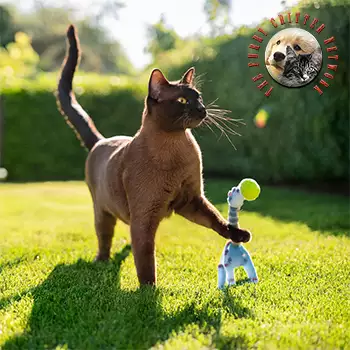General Description
The Burmese is a breed of domesticated cats split into two subgroups: the American Burmese and the British Burmese (and are not to be confused with "Sacred Cat of Burma," in respect of which, see Birman). Most modern Burmese are descendants of one female cat called Wong Mau, which was brought from Burma to America in 1930. Most cat registries do not recognize a split between the two groups, but those that do formally refer to the type developed by British cat breeders as the European Burmese.
Originally, Burmese cats were exclusively dark brown (sable), but years of selective breeding have produced a wide variety of colors. Different associations have different rules about which of these count as Burmese. Burmese cats are known for being sociable and friendly with humans, as well as very intelligent. They are also very vocal, and often call to their owners.
As a result of these separate breeding programmes, British Burmese are different from American Burmese. The British build tends to be more Oriental, with a more triangular face, while the American Burmese is stockier and rounder in the body, head, eyes, and feet. It has markedly full cheeks and a short muzzle, sometimes called "pug-like". In the British type, both the American Burmese's "cobbiness" and the obvious Siamese influence long seen in the breed are today considered grave, even disqualifying faults.
Ever since varieties other than sable/brown have existed, there have been conflicts in the world of cat fancy as to which varieties are considered Burmese. In Britain, all the colors listed below are recognised by the Governing Council of the Cat Fancy, Britain's ruling cat association. In the USA, which colors are acceptable depends on which cat registry the cat is registered with. For example, the Cat Fancier's Association only recognises the first four colors below. All varieties should gradually shade from darker backs to lighter underparts. There should be no barring or spotting.
Brown (UK, AUS)), Sable (USA), Seal (NZ)
Blue (grey)
Chocolate (UK) or Champagne (USA)
Lilac (UK) or Platinum (USA)
Red
Cream
Brown Tortoiseshell
Chocolate Tortoiseshell
Lilac Tortoiseshell
Blue Tortoiseshell
Varieties with more limited recognition:
Sable
Champagne
Platinum
Cinnamon
Fawn
Cinnamon Tortie
Fawn Tortie
Caramel
Caramel Tortie
Apricot
Experimental varieties
A new color mutation has arisen in Burmese lines being bred in New Zealand and an experimental breeding programme began in 2007 to reproduce the new color Burmese and learn more about them. The color is called russet and dark pigment in the cats' coats fades as they grow while orange pigment remains.






